Russia gives Smena 9 chicken crossbreed another shot
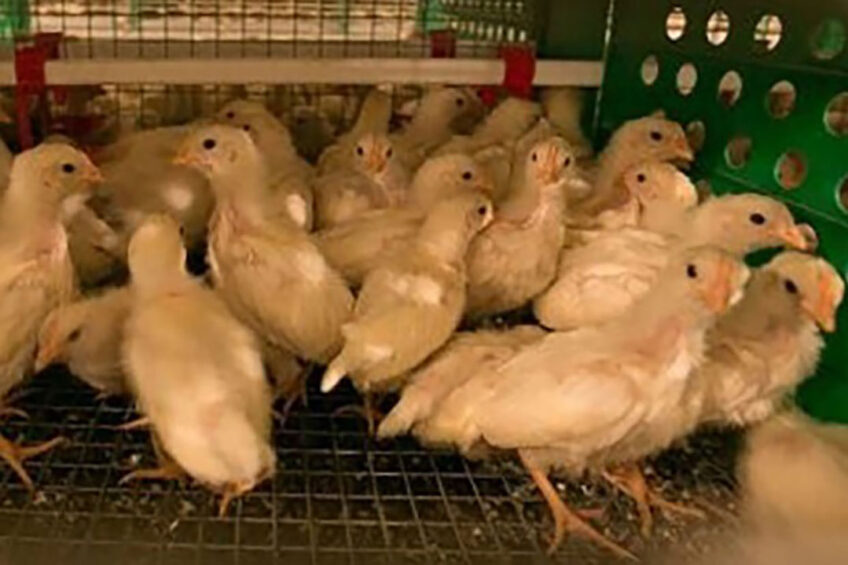
Russia’s Smena-9 crossbreed. Photo: Igor Sakharov
New tests of the Russian Smena 9 crossbreed have been launched by 5 poultry farms, hoping to confirm its presumably high production potential, Sergey Lakhtyukhov, general director of the Russian national union of poultry producers, disclosed, speaking during the AGROS-2023 industry conference in Moscow.
New trials have been launched by leading Russian poultry producers, Lakhtyukhov said, expressing confidence that they could show “the real figures and performance of this crossbreed”. The Russian poultry industry generally expects Smena 9 to be superior on 70 production indicators compared with the most popular imported crossbreeds, and almost twice as cheap.
A failed attempt
The result of the previous trials of Smena 9 appeared to be discouraging, though the exact figures have never been disclosed.
Lakhtyukhov explained that those trials were carried out in “inappropriate conditions”. In particular, he said that last time, Smena 9 chicks were placed in old poultry houses with poor animal welfare conditions and elevated veterinary risks.
In addition, during the previous trial, farmers had no opportunity to use feed specially designed for this crossbreed, Lakhtyukhov said. Russian scientists working on Smena 9 promised to make all necessary amendments for the new trials.
No time to waste
Although the trials are yet to be finished, the Russian government last year greenlighted the construction of a breeding centre for 5 billion roubles (US$80 million) to focus on Smena 9 in Moscow Oblast. Alexander Sergeev, president of the Russian Academy of Sciences, said that this venture was one of the most striking examples of the Russian “anti-sanctions actions”.
Moreover, Sergeev, speaking in August 2022, said that all poultry houses of the new breeding centre were expected to be finished by the end of the year, and equipment installation to begin in early 2023. He described the construction pace as frantic.
Hatching eggs imports drop
In 2022, the Russian poultry industry imported 400 million hatching eggs, 34% less than during the previous year, Lakhtyukhov said. The top 25 Russian poultry companies are self-sufficient in hatching eggs. There is no problem with hatching eggs supply to Russia, despite temporary production disruptions seen in 2022 due to avian influenza outbreaks in Europe. In December, there was even a 15 million surplus, which forced some companies to destroy hatching eggs. Russia currently imports hatching eggs from Slovakia, Hungary and Turkey, he added.
This year, Russia is expected to further substitute imports in this segment, Lakhtyukhov said, not specifying whether Smena 9 will play any role in this trend.
Sustainable dairy: Establishing net-zero farms
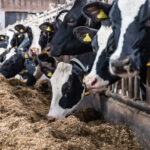
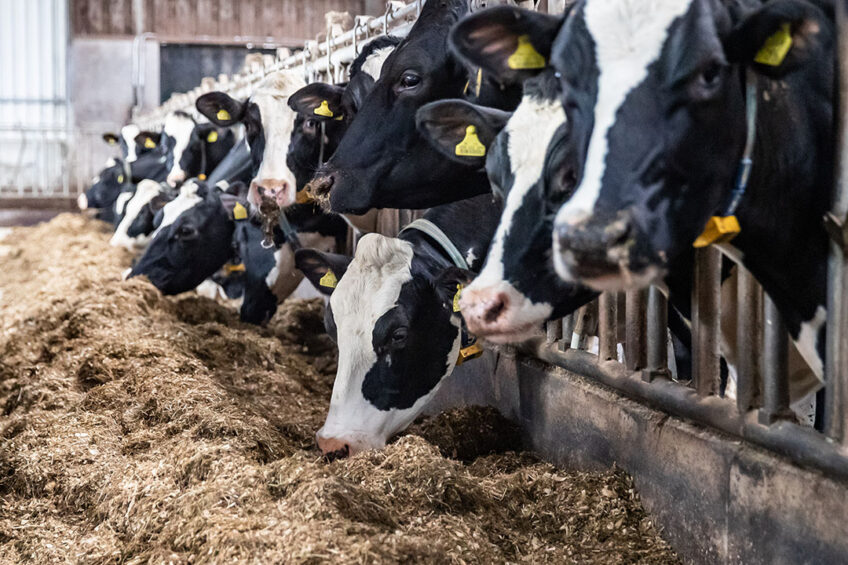
Farmers hold a unique power to be an innovative part of the solutions to climate change. Photo: Ronald Hissink
In the UK, 2 pioneering dairy and suckler farms are part of a group of 5 that will accelerate and demonstrate their journey to net zero.
The 3-year project, led by green farming organisation LEAF (Linking Environment and Farming), and supported by the Co-op Foundation, will see farmers developing and implementing a range of sustainable, integrated farming practices.
They will focus on soil, water, air and nature to gain a better understanding of the levers for change for addressing net zero and environmental enhancement. In return, they will receive training, mentoring and technical support from external consultants and LEAF’s technical team with a focus on reducing greenhouse gas emissions.
The farmers will be working towards joining the LEAF network as its first net-zero demonstration farms and to act as hubs for training and inspiration for other farmers as they begin their transition to net zero.
Vicky Robinson, LEAF technical director, said the ground-breaking project would support forward-thinking and innovative farmers with the tools, training and technical know-how to work towards these targets, collaborating and learning from each other.
“Farmers hold a unique power to be an innovative part of the solutions to climate change. We are hugely grateful for the support of the Co-op Foundation, which will enable us to drive forward more climate-positive farming and food systems for the future health of our planet,” said Robinson.
Dairy farmers
Rachel and Richard Risdon are tenant farmers on a 150-hectare dairy farm, running a grass-based herd of 300 Friesian x Jersey cows at Bramford Speke, near Exeter, Devon, supplying milk to Arla, which has mapped the carbon footprint of the raw material from the farm.
Grass at Bramford Speke is mainly ryegrass with clover. The spring-block calving herd yields about 5,000 litres per cow. Cows are grazed rotationally on a New Zealand-style paddock system, staying outside on the clay loam over river gravel soil until late November.
The couple run a low-cost system with cows once fully housed being self-fed silage, with each consuming about 1 tonne from an open clamp face and a cake-based blend of wheat and sugar beet pulp. Cows go back out once they calve in February with about 3-5kg of concentrate and no silage.
Rachel, also a practising vet, and Richard are an innovative couple bringing their experiences of farming both in the UK and New Zealand to shape their practices today. They are keen to understand more about their carbon footprint, how to protect water courses and encourage more biodiversity on-farm.
Located in the Scottish border, Stuart Mitchell, along with his wife Kate and parents, farm a 442-hectare mixed organic farm, including 140 suckler cows with a herd of breeding deer and 50 hectares of arable land. Already incorporating low-intensity practices, the family are keen to find the right balance of productivity and understand more about their organic system on the route to net zero and beyond.
The other farmers are upland sheep farmer Bob Clark, who runs a pure-bred flock of 200 Herdwick ewes plus a flock of draft ewes crossed with Texel and Cheviot tups; fourth-generation carrot and parsnip business Huntapac, which farms 1,300 hectares from Norfolk to Inverness, and Alan, Graeme and Valerie Whyte, who farm 2,000 hectares of avocados, macadamia nuts, pecans, timber and woodland in Northern Limpopo, South Africa.
NFU approach
The UK’s National Farmers’ Union has set the ambitious target of reaching net zero greenhouse gas emissions across the whole of agriculture in England and Wales by 2040. Jonathan Wilkinson, NFU Cymru Dairy Board chairman Jonathan Wilkinson said the industry would do this through:
- Boosting productivity – for example his cows wear monitors allowing him to track their well-being and adjust their diets and farm practices.
- Carbon sequestration
- Renewable energy – his farm works with neighbouring holdings to supply slurry to mix with their poultry manure, to produce 1MW of electricity through anaerobic digestion. This produces valuable nutrients in the form of digestate, which reduces the need for artificial fertilisers.
Shortage of eggs set to continue in the UK
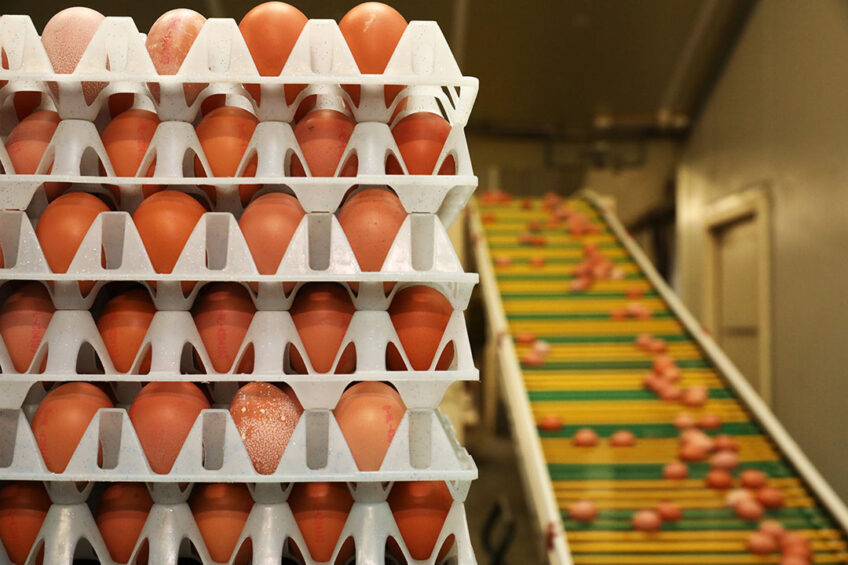
Producers and processors have been warning supermarkets of the impending shortages. Photo: Hank Riswick
Egg shortages are set to leave retailers with a supply issue over the next few months amid a general scaling back in the UK industry and fears that supermarkets may turn to imports.
Producers and processors have been warning supermarkets of the impending shortages for more than a year, pointing out that the length of cycle means production increases cannot be switched on quickly. Houses taken out of commission require the whole cycle from parent breeders, egg set to hatching, pullet rearing, and transfer to laying farm before the egg supply kicks in.
“…at some point there will be a crisis in the retail sector, with consumers putting pressure on retailers to maintain more reliable stocks of eggs.”
Matthew Green, Wot A Pullet MD, said the company was seeing growth in orders for pullets, but this will not translate into eggs on supermarket shelves until autumn.
Green said he was concerned retailers hadn’t listened to the message, adding that it was going to take some time to recover: “In the meantime, it seems highly likely that at some point there will be a crisis in the retail sector, with consumers putting pressure on retailers to maintain more reliable stocks of eggs.
The likelihood of imports
“If retailers are forced to import eggs, and it becomes the new norm, it will have dire consequences for the sector. The value of the Lion Code and consumer loyalty to home-produced eggs could be permanently undermined. The longer the shortage persists, the greater the likelihood of imports. It is therefore incumbent on all parties to have an open discussion on the impact of egg imports growing.”
Green added that with major changes in the way the sector operates, swings of over-supply and paucity will continue: “One of the perennial problems the sector faces is that swings in the size of the UK laying flock cause fluctuations in returns. This makes medium-term planning and long-term investment projections incredibly difficult.
“…poultry farmers have seen their risks multiplied and their rewards divided.”
“As we have seen by the withdrawals from the market, due to unprecedented cost pressures, the ability of a producer to weather this crisis is dependent on where they happen to be in the investment cycle, the scale and timing of borrowing and when their energy and feed contract renewals fall. This is a level of uncertainty that would not be acceptable in many sectors.
“Over the last few years, with the now seemingly permanent issue of avian influenza, poultry farmers have seen their risks multiplied and their rewards divided,” he added.
Planning applications fall
It is becoming evident that the myriad of issues facing the sector are leading to a drastic decline in the number of planning applications. Specialist agricultural and rural planning consultants, Ian Pick Associates said he had seen the lowest number of applications for free-range egg housing than in 17 years of being in the business.
“From what we might call its peak in 2010 when we were getting up to 50 applications at any one time, by contrast, we currently only have 2 live applications going through and 1 enquiry.”
Pick said the reason for the decline was down to poor margins: “Simply put, as we all know, supermarkets are paying less than the cost of production. We have seen many farmers get their fingers burned.”
But the doubling of the cost of building was also putting off potential producers, he added: “Brexit, the war in Ukraine and inflation have led to phenomenal increases. Hefty increases in the cost of steel, wood, equipment and concrete have huge impacts on build costs. A year ago, the cost to build a 32,000-bird poultry shed would be around £1.2 million. Today that cost is more like £1.8 million. The other factor is the cost of borrowing. Rates have gone from around 2% to 5% and the margins are not there.”
Commenting on the state of the broiler sector, Pick said there had been a few applications, but many farmers were restructuring, repurposing buildings for grain storage or housing.”
Boar semen can be a transmission route for ASFv
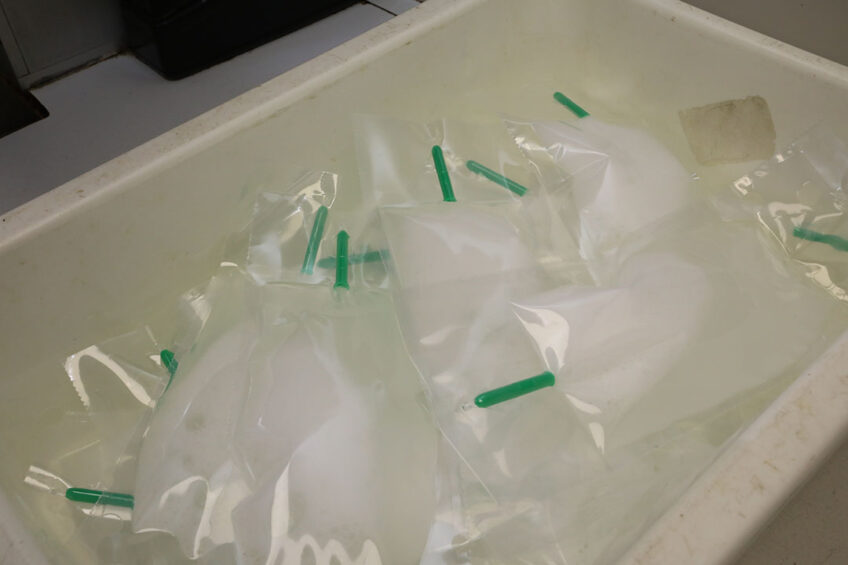
ASF can efficiently be transferred from infected boars to naïve recipient gilts through AI, according to research. Photo: Henk Riswick
African Swine Fever virus (ASFv) is capable of transmitting in boar semen, via the route of artificial insemination (AI) to gilts and embryonic piglets. That was the outcome of joint German-US research.
The study was published late 2022 in the peer-reviewed scientific title Pathogens. Researchers from the German Friedrich-Loeffler-Institut teamed up with animal health scientists in Germany and the United States to figure out whether or not AI could be a method of transmission of the virus.
Virus can be transferred through AI
That is the case, they concluded. The virus can “efficiently be transferred from infected boars to naïve recipient gilts through AI.” In the scientific article, the team warned that therefore an infected boar stud presents the risk of rapidly and widely distributing ASFv within or between countries.
The researchers used the ASFv strain “Estonia 2014” for their trial. This was conducted at the high-containment facilities at the FLI in Insel Riems, Germany. They inoculated 4 boars (2 Large White boars and 2 Piétrain boars) intramuscularly. After this. blood and semen were collected every day. The virus’ genomes were detected in the semen as early as 2 days post-infection, in blood at 1 day post-infection while semen quality remained largely unaffected.
All gilts ASFv-positive
In addition, also 14 Large White gilts were included in the trial. After insemination with extended semen, 7 of 14 gilts were ASFv positive by 7 days post-insemination, and all gilts were ASFv-positive by 35 days post-insemination.
Twelve out of 13 gilts aborted at the onset of fever. A proportion of foetuses originating from the remaining gilt showed both abnormalities and replication of ASFv in foetal tissues.
The research paper was authored by Virginia Friedrichs, Eric A. Nelson, Tessa Carrau, Paul Deutschmann, Julia Sehl-Ewert, Hanna Roszyk, M. Beer and Sandra Blome, Friedrich-Loeffler-Institut, Germany; Darwin Reicks, Reicks Veterinary Research and Consulting, St Peter, MN, USA; Tobias Hasenfuss and Elisabeth Gerstenkorn, Bundes Hybrid Zucht Programm (BHZP), Dahlenburg-Ellringen, Germany; Jeffrey J. Zimmerman, Iowa State University, Ames, IA, USA; and Jane Christopher-Hennings, South Dakota State University, Brookings, SD, USA.
Piggies in the middle of animal welfare efforts
China’s pork industry is at the center of moves to raise awareness of ethical standards of farm production. Yang Wanli reports.

Yao Dehui started a pig farm in the southern province of Guangdong in 1998, but it wasn’t until he visited a number of modern counterparts in Europe and the United States in 2005 that he began to understand how the use of technology could make his business more profitable.
Unlike most pig farms in China, which are dominated by the stench of excrement, the Western farms used automated services to clean, feed and even transport the animals. In addition to the modern facilities, Yao was deeply impressed with the foreign farmers’ ideas about raising livestock, especially the focus on the mental health of the animals.
Rather than restricting sows to refrigerator-sized cages for their entire lives-a common practice on Chinese farms and regarded as a safe, but cruel way of guaranteeing the production of piglets-the pigs were allowed to walk and play freely, with pregnant sows only being confined for a few days before and after delivery.
“I saw pigs living happily in open areas. Their health and that of their piglets were significantly better than in China as a result of these advanced rearing concepts,” Yao said. “As a businessman who earns a living by raising pigs, I reassessed our traditional model and realized that modern methods should be introduced in China.”
In 2007, he started a revolution at his farm, which supplies his other business, Guangdong Dexing Food Co. A 300-square-meter “sports field” was built, providing enough room for 50 sows to move freely prior to pregnancy. The ground was covered with sand and hay, and a number of toys were left for the pigs, such as wooden cubes and sticks they could bite on.
The farm also introduced the concept of “group rearing”, only confining pregnant sows in a cage for a month during the latter stages of pregnancy and the piglets’ weaning period. The rest of the time, the animals were kept in a 1,600 sq m feeding room, which was divided into 16 separate areas for different groups of pigs.

The new methods quickly yielded promising results; within two years the overall birth rate for the farm’s 6,000 to 8,000 sows rose by 1 percentage point and the mortality rate fell by the same number. In addition, the culling rate for unproductive sows fell by 3 to 5 percent during the same period.
In 2015, an international NGO called World Animal Protection contacted Yao and expressed interest in his attempts to modernize pig rearing in China. The organization also offered to help him improve conditions for livestock on the farm and provided him with an introduction to the concept of ethical treatment of animals.
A gentler approach
Zhao Zhonghua, China country director of World Animal Protection, which has been promoting its aims in the country since 2007, said: “Animal welfare has been promoted in many Western countries for decades. On farms, for example, people are working on issues, including cage-free farming, humane slaughter, live exports and resources for governments, to move towards kinder farming methods.”
China’s pork industry is one of the biggest in the world, with 688 million animals slaughtered last year, according to statistics from the Ministry of Agriculture and Rural Affairs.
Pigs became World Animal Protection’s point of focus as it sought to introduce changes that would benefit a range of animals, such as ducks, chickens and cattle.

“About 95 percent of mother pigs in China are crammed so tightly in cages that they can’t turn round. Their muscles wither and they become weak. Pigs raised for meat are kept in barren pens with uncomfortable floors and they have skin lesions and disease. Unhappy pigs get sick more quickly,” Zhao said.
Moreover, he said that in the first weeks after birth piglets’ teeth are usually deliberately ground down or clipped and their tails are docked to prevent them from biting one another or sustaining injuries that could become infected.
“Most farmers regard the old methods-such as raising pigs in confined spaces and limiting activity to increase their weight-as ways of maximizing profits. They don’t know that raising pigs in better conditions can result in much higher profits,” Zhao said.
According to studies conducted by the NGO in farms across the world, good animal welfare raises birth rates and reduces stress, injury and illness, thereby reducing the need for antibiotics.
Ultimately, pigs produce better-tasting meat if they are raised in good conditions.
Increased cooperation
Three large farms are cooperating with World Animal Protection to raise pigs in accordance with the principles of improved animal welfare: Dexing; Zhejiang Qinglian Food Co in Zhejiang province; and Beijing Dabeinong Technology Group Co in the capital.
In addition to reducing the length of time sows are caged and ending the docking of piglets’ tails, the three companies have introduced automated systems to improve the animals’ living conditions.
In 2016, Dexing built its first modern facility-based on the Nordic Smart Farm model-in Shantou, Guangdong, bringing state-of-the-art rearing technologies and management techniques to China for the first time.
Smart ventilation and intelligent feeding systems, allied to big data management methods, mean that only eight people are required to oversee the farm’s 2,000 sows, which give birth to 50,000 piglets a year.
In fact, the small number of workers means the premises often look deserted.
Dexing now also operates Nordic Smart Farms in Shanghai and the provinces of Shanxi and Jilin.
The company has also imported automatic cleaning machines and detergents from Germany to cut the time it takes to clean the facility. For example, it used to take one worker a week to clean the pig shed, but the increased use of automation means the job can now be done in just two days.

At Qinglian Food, feeding and cleaning duties are performed by an automatic system. In addition, each pig is fitted with an electronic chip in one ear, which helps workers to monitor their health and control the supply of food and water. Temperature and humidity levels are also controlled automatically to meet the needs of different groups of pigs.
Moreover, in the group feeding area, timid or vulnerable pigs are held in a separate small area to prevent them being attacked by more aggressive animals.
“Under this model, you see far fewer cuts and bruises on the pigs’ skins, so their meat tastes better as a result of the lower levels of stress they face,” said Jin Aiming, deputy head of Qinglian Food.
Higher profits
Rearing pigs in line with higher standards of welfare initially raises production costs as a result of the investment in new facilities and training for staff members.
However, in the long run it brings bigger profits through a combination of higher prices and lower labor costs.
According to Jin, Qinglian Food operates more than 100 chain stores in Beijing Shanghai and Jiangsu and Zhejiang provinces, which sell pork produced in its modern facilities at double the price of meat from pigs raised by traditional methods.
“An increasing number of pig farms in China are exploring Western production methods and learning about the concept of farm animal welfare. It will definitely become a trend in the future,” Jin said.

However, concerns about low public awareness of animal welfare and a lack of official recognition are major obstacles for pioneering enterprises in China looking to move forward.
“Most consumers don’t really know what farm animal welfare is, and China has no related standards or recognition issued by the industry association or the agricultural ministry,” said Zhang Chuanhang, manager of Dexing’s farm in Shantou.
“That means people are ignoring the value of meat produced under high standards of animal welfare.”
Having visited a number of European countries, Zhang has noticed that meat produced under high ethical standards is always clearly labeled as such, and its price is usually 25 percent higher or double that of traditionally produced meat.
“Along with better public awareness of the value of high-quality farm produce, a complete chain of service standards and recognition systems will be the fundamental driving force for the improvement in animal welfare in China,” he said.
By Yan Wanli | China Daily |
[行业新闻]INDUSTRY NEWS(Wine | Whisky |Baijiu)
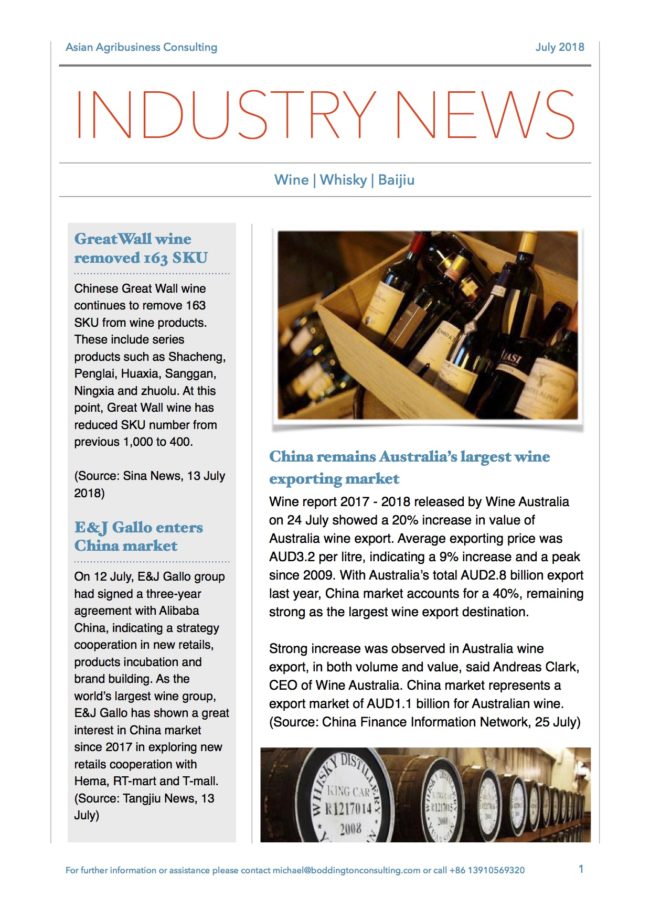
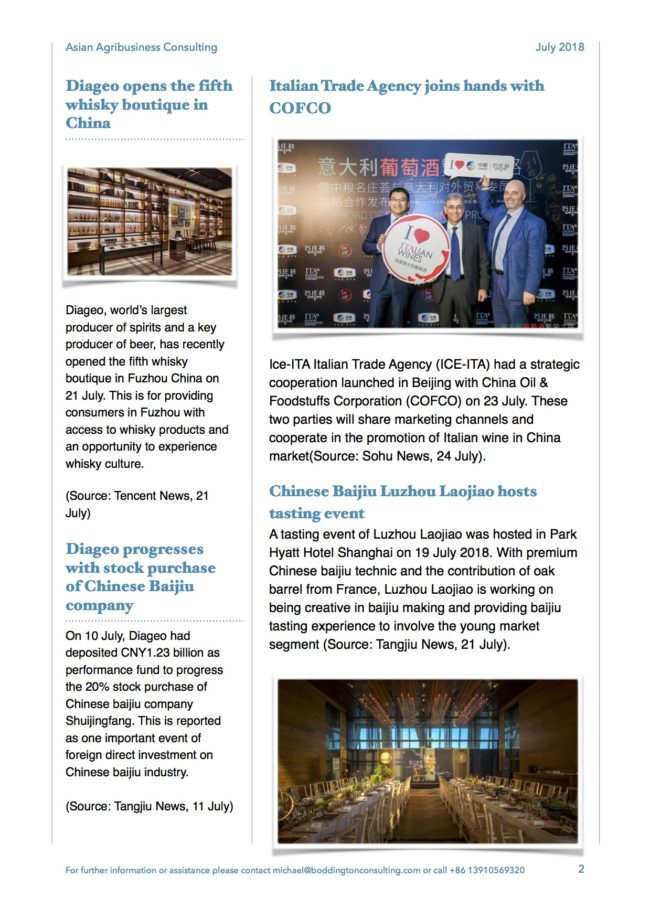
AAC provides agricultural consulting and recruitment service with more than 10 years industry experience across Asia. At Asian Agribusiness Consulting our mission is to promote and develop agribusiness across Asia. We provide specialist research and consulting services for our clients who want to increase their presence in Asia. Our service includes market research, business incubation, business representation, business strategy, inbound and outbound investment, identification distribution partners, and product registration.
For more information, please kindly refer to our Consulting business at: http://www.asianagribusinessconsulting.comand our recruitment business at: https://aartd.com
Please feel free to contact me if we could further assist.
[行业新闻]INDUSTRY NEWS(Livestock | Animal Health |Animal Nutrition)
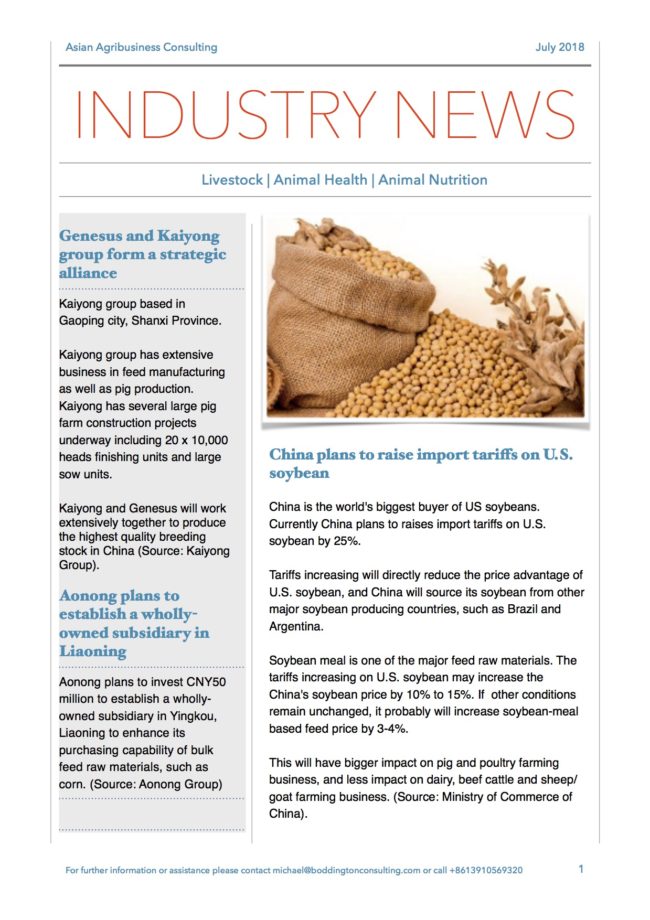
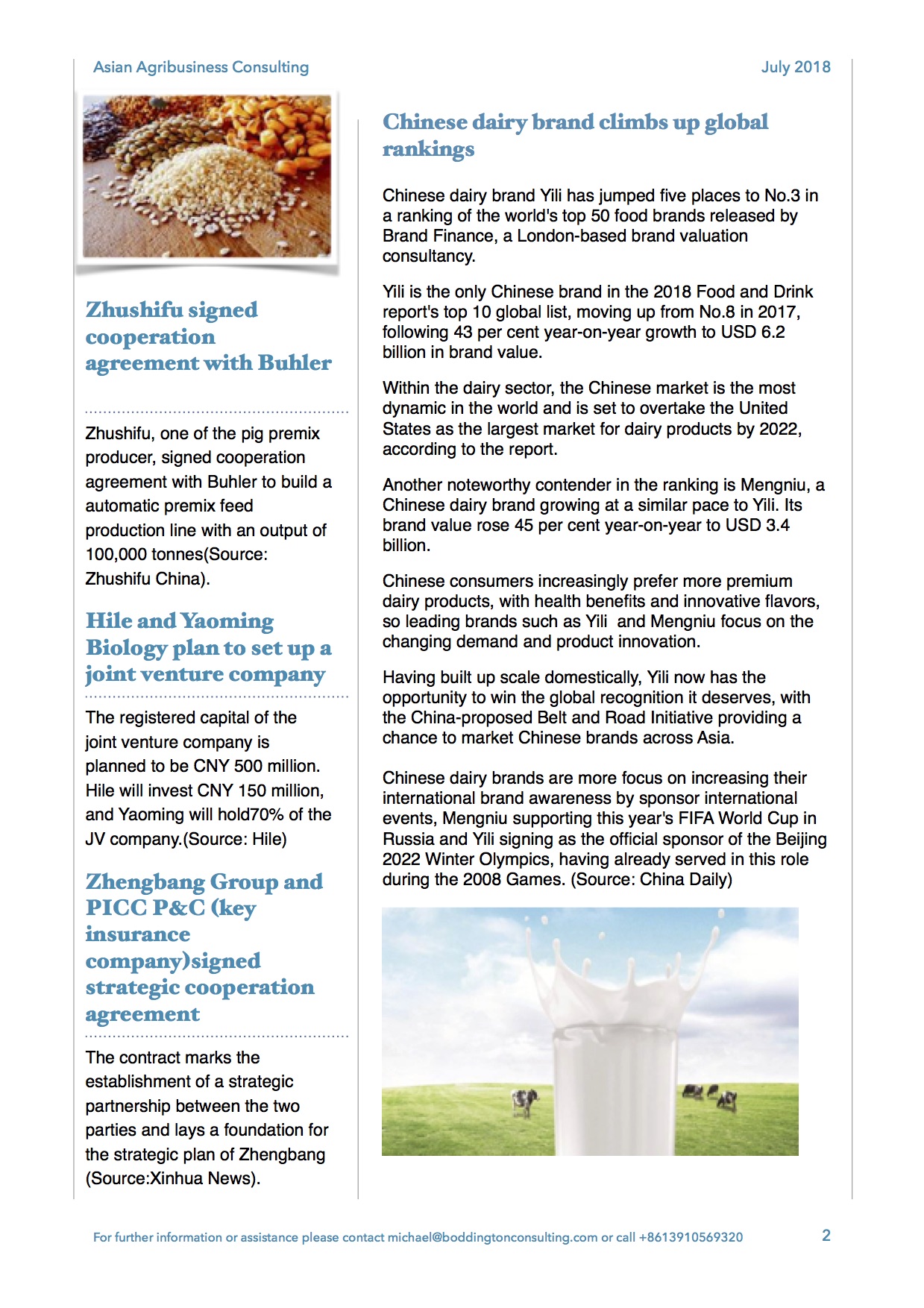
AAC provides agricultural consulting and recruitment service with more than 10 years industry experience across Asia. At Asian Agribusiness Consulting our mission is to promote and develop agribusiness across Asia. We provide specialist research and consulting services for our clients who want to increase their presence in Asia. Our service includes market research, business incubation, business representation, business strategy, inbound and outbound investment, identification distribution partners, and product registration.
For more information, please kindly refer to our Consulting business at: http://www.asianagribusinessconsulting.comand our recruitment business at: https://aartd.com
Please feel free to contact me if we could further assist.
Experts: Feed alternatives reducing soybean demand
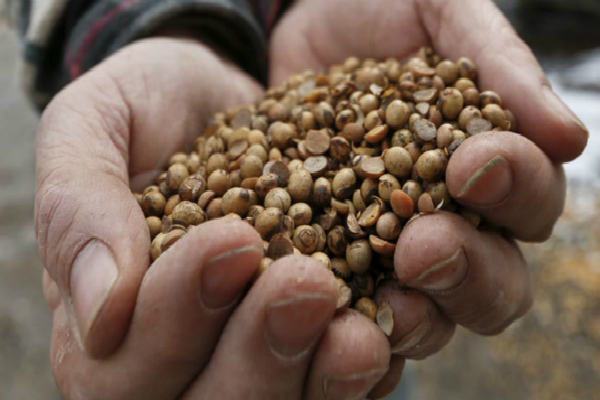
Imports could drop by 10% as tariffs lift prices and domestic farms expand
China could reduce imports of soybeans by more than 10 million metric tons this year – down more than 10 percent from last year – because of domestic production and the promotion of soybean substitutes, analysts said.
Because of its low cost, farmers nationwide have long relied on imported soybean meal, the remains of the plant after oil is extracted, to supplement animal feed.
However, as the cost of imported soybeans and soybean meal has increased as a result of trade frictions between China and the United States, alternatives such as rapeseed meal and cottonseed meal are becoming more economical, according to Li Qiang, chief adviser at commodities consultant Shanghai JC Intelligence.
Li predicted that China will increase imports of sunflower meal, palm kernel meal and rapeseed this year, potentially cutting demand for imported soybeans by about 6 million tons.
In addition, the widespread promotion of a low-protein animal feed with added amino acid could reduce demand for soybean meal by up to 7 percent, equal to a further 5 million tons of imports, according to Zhang Haitao, chief technical supervisor at Guangdong Evergreen Feed Industry Co, based in Zhanjiang, Guangdong province.
Yin Yulong, a member of the Chinese Academy of Engineering, explained that the animal feed has 3 percent less protein but four extra kinds of amino acids.
Research has shown no decline in the production and quality of pork from pigs raised on the feed, he said.
More than 80 percent of the soybeans consumed in China are imported. Last year alone, the country imported more than 95 million tons worth about $40 billion, according to the General Administration of Customs. Brazil and the US are the top two suppliers, it said.
Experts have predicted soybean prices in China will rise in the short term due to the trade frictions. China has imposed additional tariffs on soybean imports from the US.
However, Zhong Funing, a professor of agricultural economics at Nanjing Agricultural University, said the Chinese public needn’t worry about soybean supplies.
“There is a surplus worldwide,” he said, noting that China’s soybean imports from the US have decreased over the past few years, with Brazil now the biggest source.
In addition to promoting soybean meal substitutes and diversifying its import sources, China has also been increasing domestic production, the Ministry of Agriculture and Rural Affairs said in May.
It said the country was to increase its soybean farms by 667,000 hectares this year.
By Wang Xiaodong | China Daily |
High temperature leaves sea cucumbers dead, farmers devastated
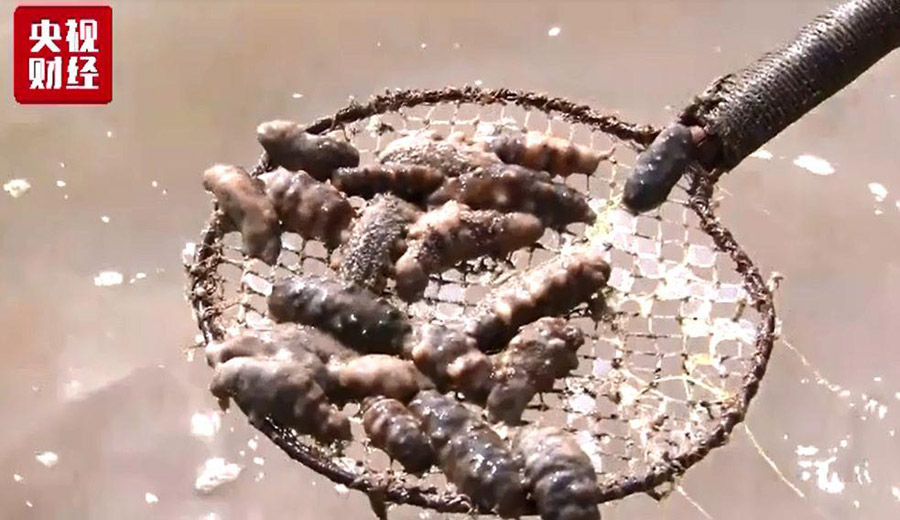
High temperatures have caused deaths of sea cucumbers in a large area in Northeast China’s Liaoning province this summer, China Central Television reported.
Sea cucumbers die and decompose when the water temperature rises above 30 C, said Yu Chang, a farmer who has been raising sea cucumbers for more than 10 years.
The water temperature was about 25 C to 26 C in past years, but this year, the temperature reached 35 C to 36 C around 2 pm in recent days, Yu said.
The high temperature wiped out sea cucumbers in 90 percent of his pools with a total area of 1,000 mu (about 666.7 hectares), Yu said. The pools had an annual output of about 25 tons of sea cucumbers in past years.
Based on the current prices of sea cucumbers sold in the market, the loss will reach about 10 million yuan ($1.46 million) this year, Yu said.
In Dalian alone, farmers will suffer about 6.8 billion yuan loss.
According to local fisheries departments, sea cucumbers began to die across the province from July 28, and the animals first to go were in pools with a depth less than 7 meters.
Now many farmers have hired divers to fish out sea cucumbers, hoping to reduce the loss. Some divers said that lots of dead sea cucumbers have turned into a state of glue in the water.
However, Yu said the sea cucumbers will not be sold in the market as they do not meet the standard, and will be eaten by farmers themselves or given to their friends.
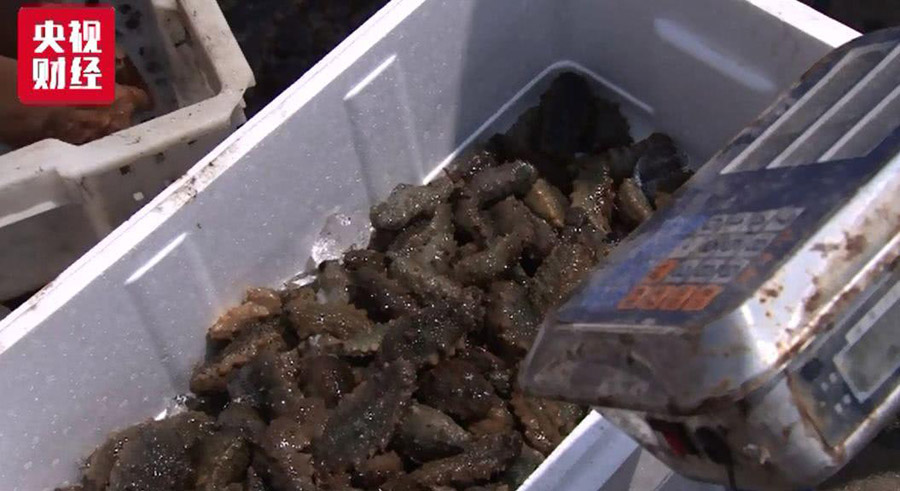
Local authorities have invited experts to help farmers. Lin Yun, an engineer from Panjin, said that farmers could take steps to enrich water oxygen to lower the death rate.
Zhou Wei, professor from Dalian Ocean University, said using ice blocks to cool off pools was not a proper way, and it was always best to change water during the tide.
Zhou said that dead bodies should be taken out of the pools in time, because an infection will cause more deaths of other sea cucumbers.
CCTV reported that the loss happened mainly to sea cucumbers raised in pools, and those raised on the sea bed beneath 30 meters of water did not die. Farmer Sun Gang said the high temperature did not influence his sea cucumbers.
Farmers use three ways to raise sea cucumbers, in pools, in cultivation houses and under the sea. The first two ways have an advantage of sea cucumbers growing fast but a disadvantage of poor flow of sea water.
Starting from 2014, Dalian started to offer an insurance program to cover the loss caused by high temperature, but only two farmers bought the insurance this year.
Wang Mingli, chairman of sea cucumber association of Wafangdian, said many farmers were left in tears. Farmers in Wafangdian raised sea cucumbers in pools with an area of about 500,000 mu, and 90 percent of the pools suffered losses.
Wang Mingli said that the association is negotiating with the government and banks, expecting banks to offer loans to farmers.
By Guo Kai | chinadaily.com.cn |
Talks best way for US to settle trade disputes
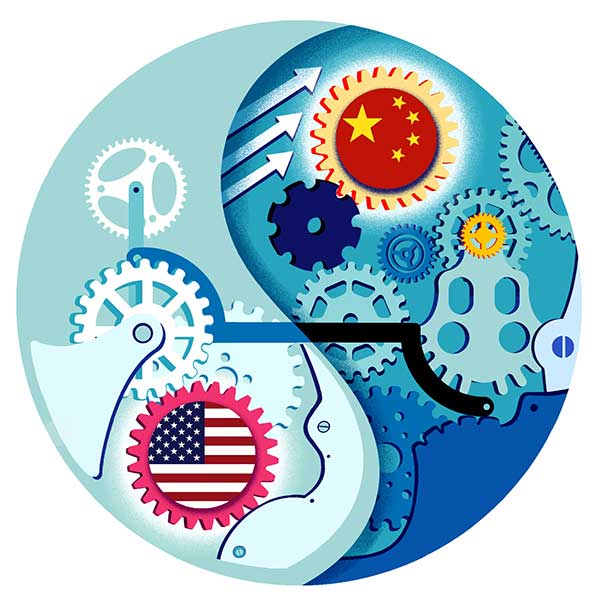
China launched reform and opening-up in 1978, and established diplomatic relations with the United States one year later. Since then economic and trade ties between the two sides have deepened and facilitated China’s remarkable economic growth. But the US has been the largest overseas beneficiary of China’s growth bonus.
China’s growth and its cooperation with the US are important external factors fostering the US’ macroeconomic performance, with China’s massive market demand helping US companies earn huge profits, and sharpen their international competitiveness.
Also, China’s fast-paced economic growth has boosted the recovery of the US and world economies after the global financial crisis, which was triggered by the subprime mortgage crisis in the US in 2008. According to the International Monetary Fund, China contributed 43.2 percent (calculated in market exchange rate), or 28.6 percent (calculated in purchasing power parity) to global GDP growth from 2010 to 2017.
And the fact that consumer goods comprise a high proportion (about 50 percent) of China’s exports to the US has been a key factor in keeping the US’ inflation rate low.
China is the US’ largest creditor, and by purchasing large amounts of US government bonds, it has helped the US raise funds at low costs, reduce its expenditure on national debt interest, and expand its room for fiscal policy regulation.
Trade in services with China has strengthened the US service industry’s competitiveness. The US’ service exports to China increased from $15.8 billion in 2008 to $57.6 billion in 2017, with its trade surplus rocketing from $4.9 billion to $40.2 billion, which accounted for 32.5 percent of the US’ global service trade surplus. In the past decade, the US has earned $228 billion in service trade with China.
As China further opens up its financial, telecommunications, medical care, education and pension sectors, the US’ surplus in service trade with China is bound to rise even higher, particularly after China expands the share of foreign investment in its banking, securities, fund, futures and financial management businesses.
The US has also greatly benefited from its investment in China. According to the US Bureau of Economic Analysis, the US’ accumulated investment in China had hit $92.5 billion by 2016, which yielded a profit of $11.8 billion. The average rate of return on its investment in China is 12.8 percent, 5.1 percentage points higher than that of its investment in other parts of the world.
In contrast, China’s investment in the US is mainly concentrated in government bonds, and the rate of return fluctuates between 1 percent and 3 percent, remaining below 2 percent most of the time. This means the return on China’s investment in the US is much lower.
The BEA data also show that China is an important source of profits for US multinational companies. The Chinese market, and its huge and growing demand also play an important role in stimulating the US companies’ technological innovation and upgrading.
A Deutsche Bank report says the US companies’ sales in China are markedly higher than the US’ exports to China, and have probably surpassed the Chinese enterprises’ sales to the US.
All this proves the US is not the side being robbed in bilateral trade. The economic and trade ties between the world’s two largest economies, including the trade and investment structure, and the distribution of labor and interest, are a result of the long-term development of the world economy. So the US must realize its trade disputes with China can be settled only through negotiations on an equal footing. The two sides should therefore prevent their trade frictions from escalating and evolving into a threat to global economic recovery.
The author is a researcher in economics at the Chinese Academy of Macro Research.



